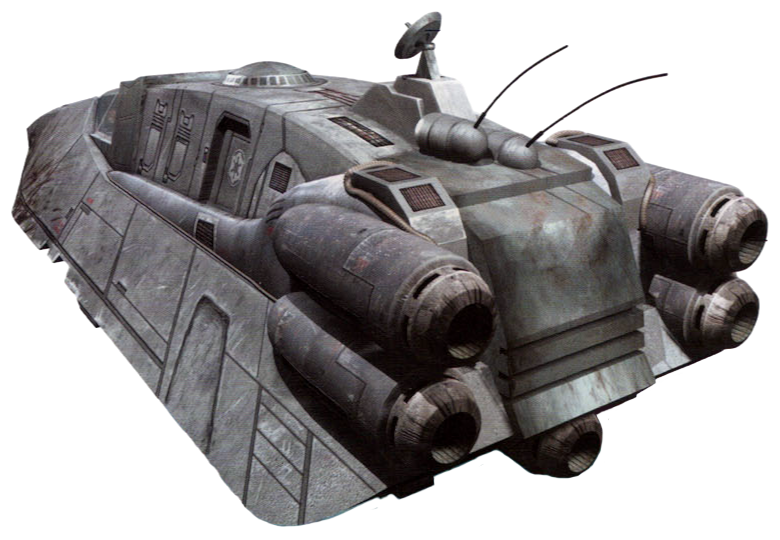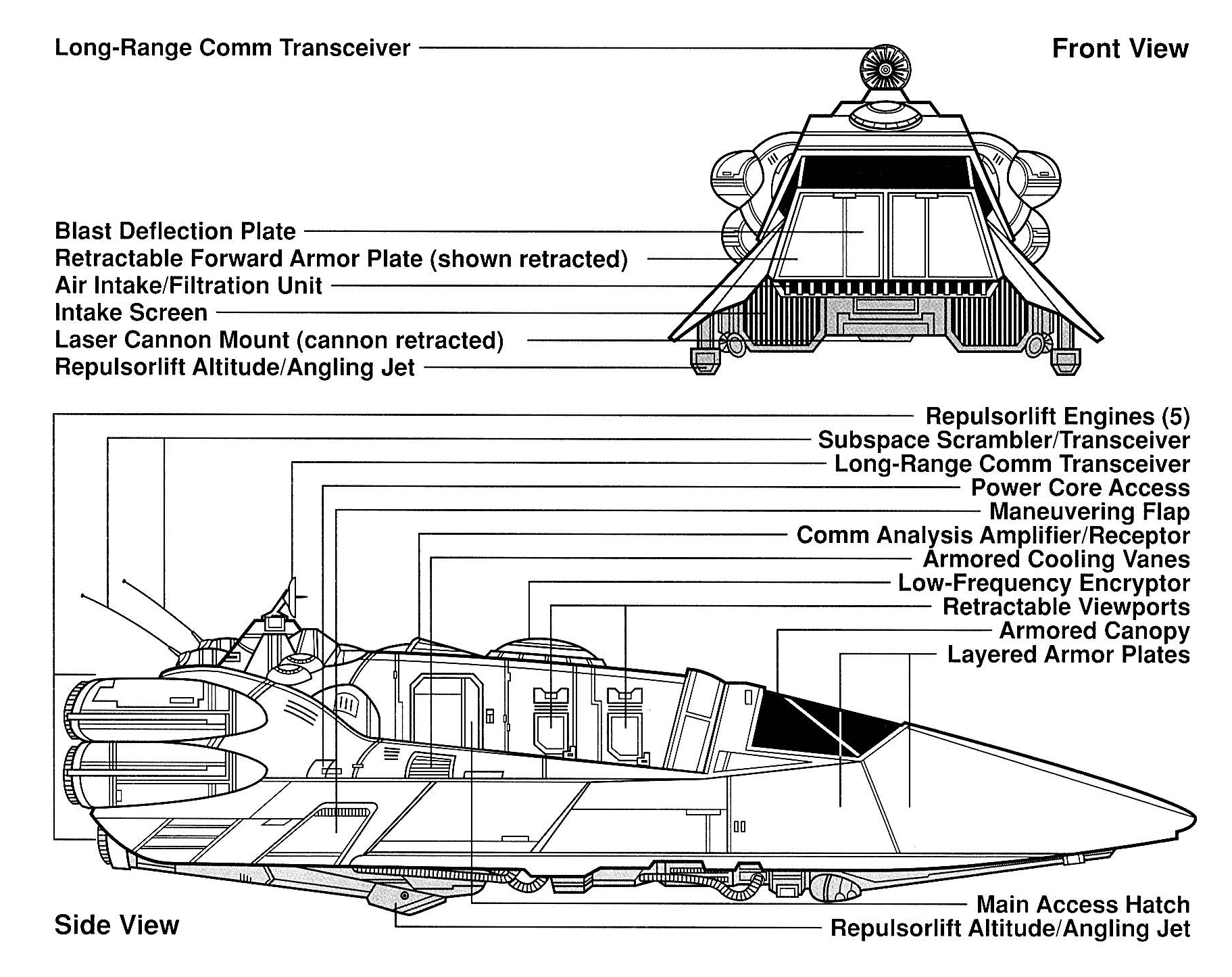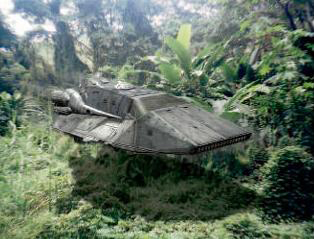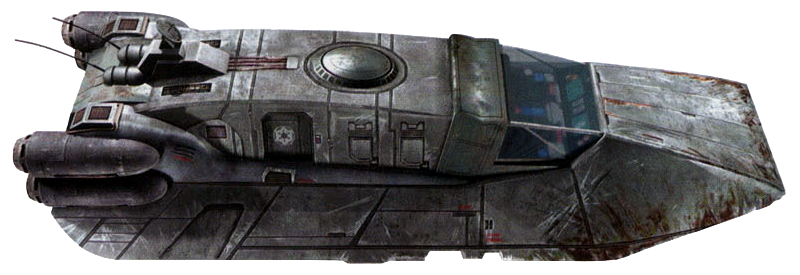
Aft view of a Chariot LAV
Uulshos Manufacturing's LAVr QH-7 Chariot was a modified military landspeeder intended for use in situations where proximity to combat zones and imminent danger were not expected to occur. The main aim of the Chariot was to protect important command personnel while they coordinated soldiers and operations, but not to lead from the front.
Measuring 11.8 meters, the Chariot was more heavily armored than other equivalent landspeeders, with layered armor plates to protect from low powered blaster bolts, and an armored canopy above a blast deflection plate. Retractable view plates covered side observations ports. Five repulsorlift engines drove the Chariot, with ventral mounted repulsorlift altitude/angling jets. The Chariot could achieve speeds of one hundred kilometers an hour, and had a flight clearance of eight meters. Some models were rated at speeds of 350 kilometers an hour.
The interior of the Chariot was filled with computers running battle-assistance programs, allowing the commander to keep track of their units in the field. The computer incorporated advanced tactical displays using holographic technology to produce completed schematics and battlefield displays for the onboard officers, along with constant data updates. A full dedicated sensor and communications array allowed the commander to keep track of, and coordinate, up to a dozen units. A full communications uplink kept the commander in contact with any orbiting starships, fitted with a signal scrambler to ensure outgoing transmissions were impossible to intercept and decode by enemy agents. The communications suite incorporated a Long-Range Comm Transceiver mounted atop the Chariot, as well as a Subspace Scrambler/Transceiver, a Comm Analysis Amplifier/Receptor, and a Low-Frequency Encryptor. The rear of the Chariot was full of electronic countermeasure equipment to protect the Chariot from targeted electromagnetic attacks and other disruption tactics. The systems were shielded, and back-up systems were present in case of damage or failure.

LAVr QH-7 Chariot schematics
The Chariot's only weapon was a single, forward mounted Mk 2/S laser cannon that could only fire in the direction that the speeder was traveling in at the time. The weapon was slung below the Chariot, and dropped out of a hatch below the main cabin.
Chariots were crewed by three personnel; the driver, the commander, and a guard who doubled as the senior aide to the commander as well as the gunner. If necessary, an entire command staff could fit into the Chariot, and the communications array was staffed by four communications droids. Beneath the commander's chair was a switch that activated a self-destruct timer. The presence of the self-destruct was not generally advertised, and the timer could be set for up to ten minutes to destroy the vehicle and the battle records stored in its computers.

A QH-7 Chariot
One of the more common command speeders in use by the Imperial Army, Chariots were employed to allow a commander to enter a battlefield and flee it again without placing the commander in direct peril. The common usage of the Chariot was not down to its battlefield performance, but instead was due to the low cost-per-unit of the vehicle. Chariots were rarely unescorted while in the field, often keeping pace with advancing infantry, repulsorcraft and walkers which meant that the Chariot's primary weapon was rarely fired. Chariots were a favored method of evacuating from a battlefield by veteran officers who had fought in the Clone Wars; they remembered LAAT/i dropships drawing too much anti-aircraft fire during extractions. In general, Chariots were deployed to support artillery and repulsorlift platoons, and occasionally to scout units for special mission profiles. Chariots were favored by generals traveling to the front lines, and they were often employed to ferry the general to the front lines to conduct face-to-face briefings with field officers in safety.

Profile of a Chariot LAV
Grand Admiral Thrawn instigated a program of upgrading and modifying the units under his command. Chariots had the underslung laser cannon removed and replaced with a more versatile swivel laser cannon. The weapon was more powerful than the standard weapon, but was still underpowered and unsuited to direct combat. In addition, many of the vehicles found their back up computer systems stripped out and installed into other landspeeders.
In 9 ABY, a Chariot coordinated the search for Luke Skywalker and Mara Jade after the pair crashed in the dense forests of Myrkr. Skywalker destroyed the Chariot in Hyllyard City by using his lightsaber to cause a ten-meter-tall stone arch to fall on it.